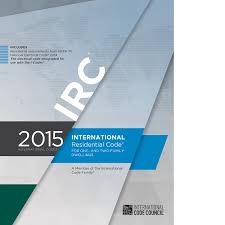
Today I want to talk about alternate options for fire protection based on special approval testing.
First, let’s think about an attic.
Imagine spraying foam to the underside of a roof deck and then trying to cover it, in such a way that the foam is not exposed, with one of the ignition barrier products mentioned in the building code:
1 ½” mineral fiber
¼” wood structural panel
⅜” particle board
¼” hardboard
⅜” gypsum board
0.016″ corrosion resistant steel
1 ½” cellulose insulation
¼” fiber cement panel
Now that’s tough!
Luckily both the IRC and the IBC allow for special approvals based on large scale testing.
Well, several years ago the spray foam industry developed the acceptance criteria for spray polyurethane foam, called AC-377.
This document describes lots of testing that is used to evaluate spray foam products.
And one part of this document, Appendix X, describes an alternate test assembly that allows a spray foam product to be installed in an attic or crawl space, that is limited to the service of utilities, without a code prescribed ignition barrier.
So basically, if a manufacturer passes this test (a modified NFPA 286 test) then the specific product that was tested is approved to be installed in the way it was tested.
If you look at all the spray foam products on the market, almost all closed cell spray foams, intended for construction applications, pass this test with the foam exposed and no additional fire protection, and a few open cell spray foams pass this test with bare foam exposed and no additional fire protection, but, most open cell foams require an intumescent coating applied over the foam to pass the Appendix X fire test.
Now, a key point must be made here – passing the Appendix X test, with a coating, means that the use of the system, the specific foam with the specific coating, omits the code prescribed ignition barrier. It does not make the intumescent coating an ignition barrier.
Intumescent coatings are not ignition barriers. They are only approved, as tested, over specific spray foam products.
The same applies for spray foam and intumescent coating systems that meet interior finish test requirements. When these systems pass a full scale NFPA 286 test, in accordance with the interior finish acceptance criteria of the IBC, the use of the system omits the code prescribed thermal barrier, it does not make the intumescent coating a thermal barrier.
One final thought, where would you use spray foam with an intumescent coating as an interior finish?
Probably not in a living space of a residential building, that wouldn’t look quite right.
But here are a few places you might consider using one of these interior finish systems, in lieu of gypsum board:
When the owner wants a storage area in an attic or crawl space
When you fully condition an attic or crawl space with a supply and return
Above a drop ceiling, that is not fire rated
Or, when the owner wants to leave the foam exposed on the underside of the roof, like in a restaurant, a big box store, warehouse or convention center
This has been a few thoughts on intumescent coatings and how they work with spray foam to meet building code requirements. This is Robert Naini, your Spray Foam Advisor, and the guy in the Hawaiian shirt, thanks for checking me out and catch me on some more videos.


